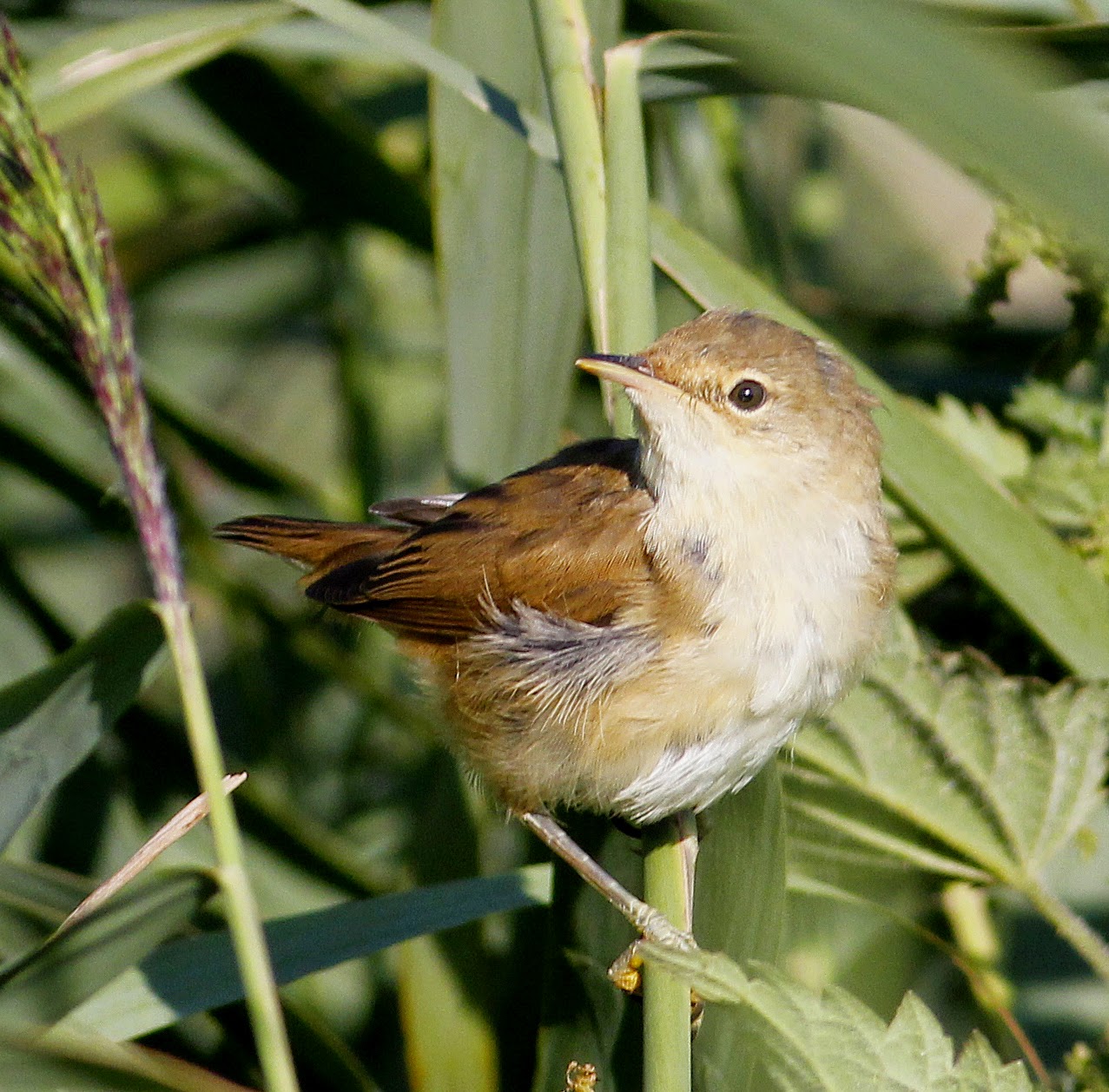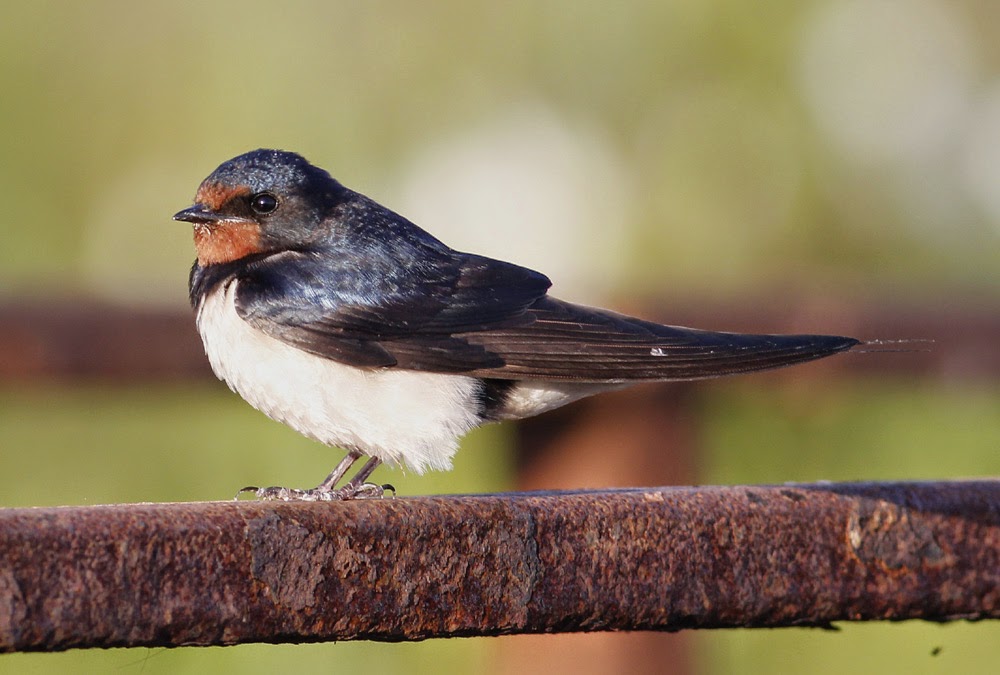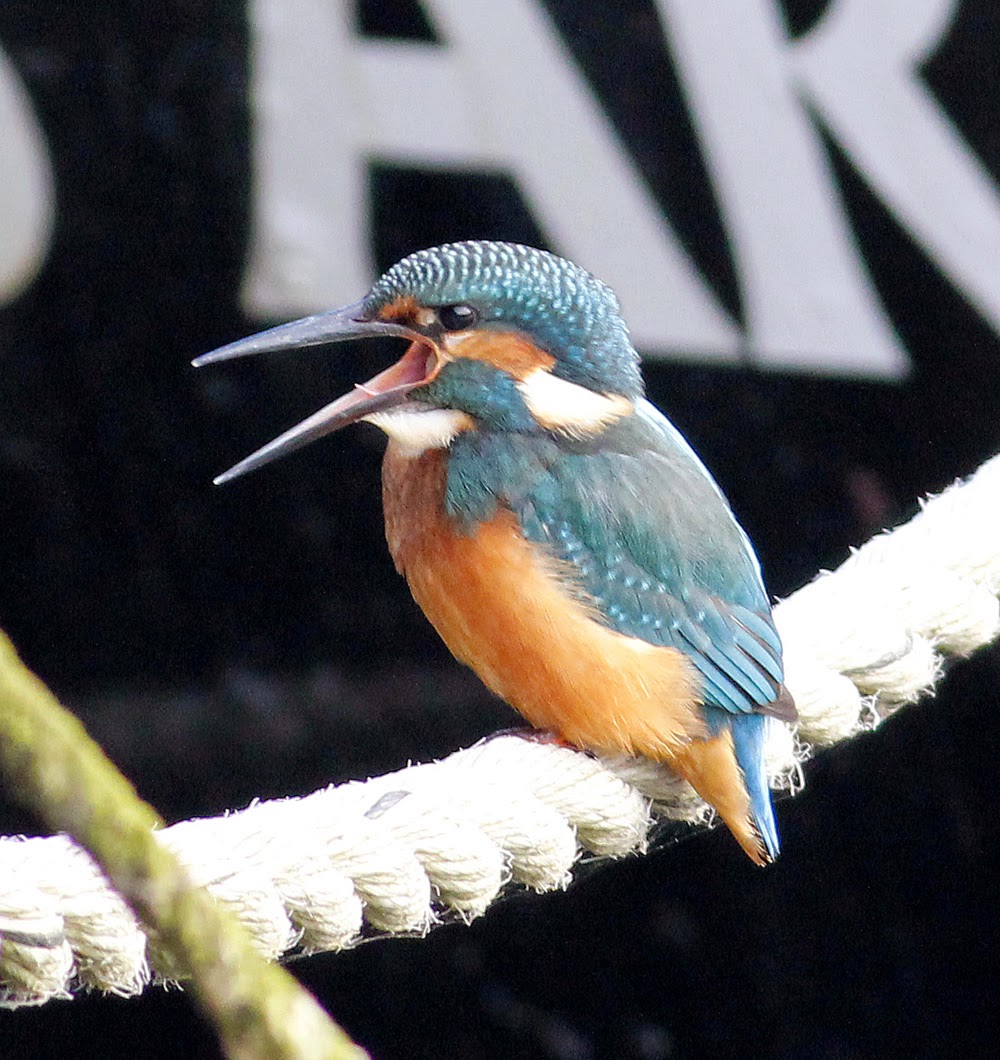In the half-light of dawn the Kestrel of Head Dyke Lane was where it often sits atop one of two telegraph poles. Birds are such creatures of habit, just like the birders who watch them. It was too dark for a photo and asking for trouble to stop along this double white-lined stretch of the A558, one of the most dangerous roads in England.
In the tree tops at Lane Ends I counted 41 Little Egrets waiting for the off, any minute now. And then through Cockerham I spotted a roadside Tawny Owl as it too saw the car’s headlights slowing to make it fly back to the nearby trees.
A heavy autumn mist lay across Conder Green and the River Lune, so much in fact that there was no point trying to bird watch until the sun lifted a little more. At Glasson Dock the boats were enveloped in misty light as early rising Swallows and Starlings attached themselves to any masts which reached into the emerging sunshine.
Misty Sunrise - River Lune
Glasson Dock
A few Swallows were feeding low across the water as frrom the left a Kingfisher appeared amongst them, slowed as if to stop and then vanished once more into the gloom. There was a Common Tern doing a hunting circuit but too fast with no light for a picture, and then a croaking Grey Heron flying out of and back into the mist.
After a while the mist cleared enough to count the Swallows at about 200, a drop from recent counts, and the Alba wagtails at 20+, also a fall from the highs of late.
Swallow
The towpath walk gave a couple of Chiffchaffs and a Great-spotted Woodpecker but otherwise quiet. By now folk were stirring, the overnight camping anglers and the first doggy walkers on the path so I high-tailed it to Conder.
Black-headed Gull
First check was the far creek where a small, juvenile Ruff picked along the sand, my first Ruff of the autumn. The Ruff fed on its own, away from the usual assortment of 2 Greenshank, 7 Black-tailed Godwit, 4 Snipe, 2 Common Sandpiper, 6 Curlew, 30+ Lapwing, 20+ Redshank and 20 Teal.
On the pool - 3 Common Tern, 7 Little Grebe, 1 Grey Heron, 1 Cormorant, 1 Kingfisher, 2 Wigeon.
And in the vicinity - 50 Goldfinch, 1 Kestrel, 1 Reed Bunting and 1 Chiffchaff, with the hedgerow and the old orchard quiet following an overnight clearout of the birds from Friday and Saturday.
There have been a lot of Chiffchaffs this week with many dozens being reported along the coast, even one migrant juvenile in my own garden on Saturday where they are but occasional visitors.
Chiffchaff
I called back at Lane Ends, Pilling hoping to see Wheatears but there were none, just 1 Green Sandpiper, 1 Buzzard, 25 Goldfinch, 2 Skylarks and lots of folks out for the sun.
Yes, the pun was highly unoriginal and the morning slightly disappointing but it’s nice to add Ruff to the autumn list of Another Bird Blog.



















































































